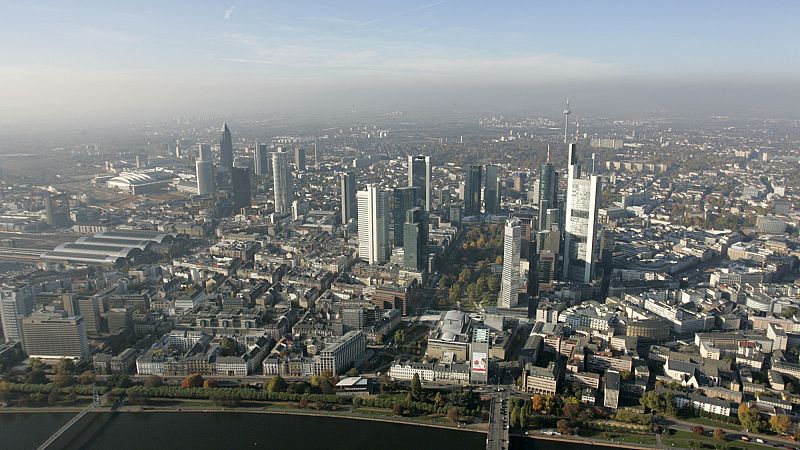The average wages vary significantly throughout Europe, as does the cost of living. Which nations provide the most substantial compensation? Furthermore, what do salary comparisons look like when measured against purchasing power standards?
Several definitions exist for salary, wages, and earnings, with each highlighting distinct elements. Notably, the mean full-time adjusted compensation per worker proves quite beneficial.
Eurostat’s computation relies on the average gross yearly income for a full-time position. News Globe converted these amounts into monthly wages by merely dividing them by twelve.
In 2023, the typical full-time equivalent monthly wage for employees varied between €1,125 in Bulgaria and €6,755 in Luxembourg. The European Union median stood at €3,155.
Among EU countries, Denmark and Luxembourg are the only ones with salaries above €5,000. In Denmark, the average salary reaches €5,634.
Ireland (€4,890) and Belgium (€4,832) are nearly at this limit.
Austria (€4,542), Germany (€4,250), and Finland (€4,033) also provide salaries exceeding €4,000.
Approximately 10 out of 26 EU nations pay less than €2,000.
Out of the 26 European Union countries (with the exclusion of the Netherlands because of unavailable Eurostat data), 10 recorded an average gross salary under €2,000.
In four of the member states, the average salary fell below €1,500. Poland was slightly above this threshold at €1,505. Meanwhile, in Romania, Greece, and Hungary, wages hovered around the €1,400 range.
Among the European Union’s four biggest economies, Germany (€4,250) has the highest mean wage, with France (€3,555) coming second. In contrast, both Italy (€2,729) and Spain (€2,716) have average earnings that fall short of the EU average by over €400 each.
The Eurostat statistics encompass 26 EU member states. Although they cannot be directly compared because of differing methodologies, the OECD figures for average annual wages per full-time equivalent worker cover additional European nations.
The Organisation for Economic Co-operation and Development reports that Switzerland boasts the highest average salary in Europe at €8,104 per month. In another EFTA member state, Norway, the average pay stood at €5,027. Meanwhile, the United Kingdom reported an average income of €4,220.
For €4,629, the Netherlands stands as one of the highest-paying nations within the European Union.
Turkey, which is a candidate for European Union membership, reported the lowest average wage of €873, placing it as the sole nation under the €1,000 threshold.
The overall pattern indicates that Western and Northern European nations top the charts in terms of salary amounts, whereas Southern and Eastern Europe generally provide considerably lesser nominal wages.
Top earnings in Europe based on purchasing power
When using purchasing power standards (PPS) to measure average salaries, the disparity tends to diminish. This adjustment accounts for variations in price levels across countries. Essentially, PPS serves as an imaginary monetary unit designed so that one unit will buy a consistent quantity of products and services everywhere.
Nevertheless, considerable discrepancies persist throughout the European Union. In nominal values, the highest mean wage is sixfold higher compared to the lowest. Once adjusted for Purchasing Power Standards (PPS), this difference shrinks to a ratio of 2.6.
Within the European Union, average wages measured in Purchasing Power Standards (PPS) vary from €1,710 in Greece to €4,479 in Luxembourg, with the overall EU average being €3,155.
Belgium ($4,038 per capita), Denmark ($3,904 per capita), Germany ($3,898 per capita), and Austria ($3,851 per capita) also ranked within the top five nations.
At the lower end of the spectrum, Slovakia, Bulgaria, and Hungary trail after Greece, all having average wages under €2,100 when measured in PPS.
Romania places considerably higher when measured in PPS.
In the OECD statistics, Switzerland shines with a substantial salary in terms of purchasing power, amounting to €4,412 PPS. Close behind are the Netherlands and Norway, each providing approximately €3,800 PPS. In the United Kingdom, the mean salary stood at €3,357 when measured in PPS.
Similar to Romania, Turkey (€2,413 per person) has a notably higher standing in this particular metric.
Significance of increased productivity and stronger negotiation abilities
Dr. Sotiria Theodoropoulou, who leads the European Economic, Employment, and Social Policies Unit at the ETUI, explained the disparities in national wage levels by stating that increased productivity serves as a solid basis for consistently higher salaries. She highlighted that countries with robust industrial or financial sectors generally exhibit greater productivity. Additionally, high-technology industries typically demonstrate superior efficiency as well.
She similarly highlighted the significance of labor market institutions. “In broader terms, greater worker negotiating power – whether derived from robust collective bargaining systems or/and from policies offering workers alternative choices within the job market – increases the likelihood that improvements in productivity will result in increased wages and labor expenses,” she explained to News Globe.
In which nations did average salaries increase the most?
In the past five years (2018–2023), the mean full-time adjusted salary saw an increase when measured in nominal euros throughout all 26 European Union nations.
Throughout the European Union, the typical monthly income increased by €507, leading to an yearly boost of €6,708, reflecting a growth rate of 19%.
The rise varied from merely 4% in Sweden to an impressive 102% in Lithuania when expressed as percentages.
Notably, the growth was less pronounced in the European Union’s biggest four economies: Spain experienced an 19% uptick, followed by Germany with 18%, France at 14%, and Italy just 10%.
The Nordic EU nations, as well as Cyprus and Greece, also stayed beneath the overall EU benchmark.
When measured in euros, the rise in average wages varied from €91 monthly in Greece to €1,291 each month in Luxembourg. Lithuania saw a significant boost of €1,141 per month as well.
The 2024 salary figures will be published by Eurostat in late 2025.


Leave a Reply